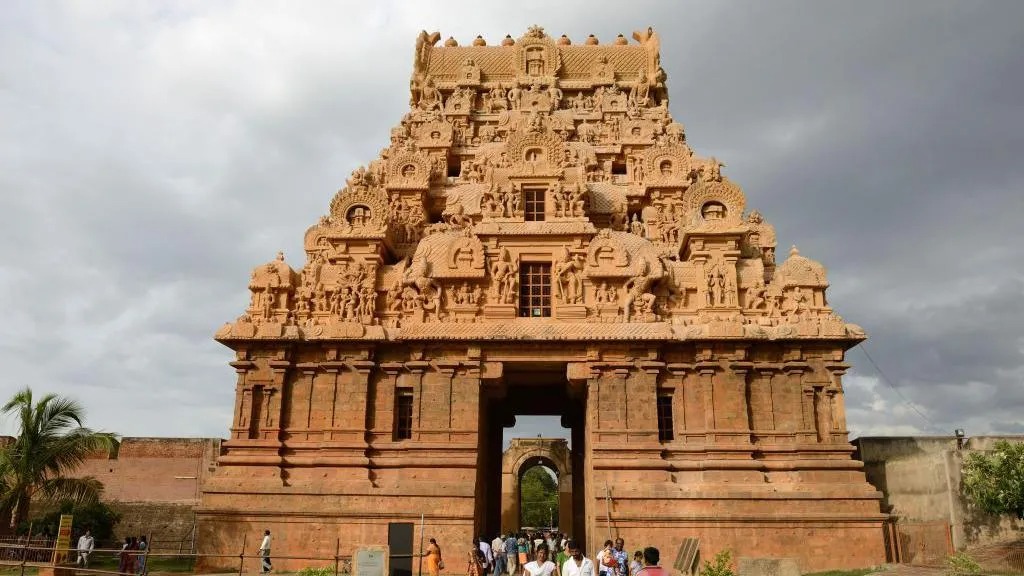
Legacy of India’s Chola Dynasty: Temples, Treasures & Trade
In the heart of the Middle Ages, while Europe grappled with political flux and emerging nation-states, southern India was home to the extraordinary Chola dynasty, whose legacy of monumental temples, maritime trade, and artistic innovation shaped history.
By 1000 CE, the Cholas were transforming India’s Tamil Nadu region into a thriving nexus of trade, culture, and spirituality. At the center of their achievements stood Raja Raja Chola, the empire’s iconic ruler, who commissioned the Brihadishvara Temple, a towering structure that rivaled even Egypt’s pyramids in grandeur.
The Rise of the Chola Dynasty
The Cholas began as one among many rulers in Tamil Nadu’s Kaveri floodplain, but their innovation and vision elevated them above their rivals. By consolidating power and aligning with religious sentiment, the Cholas left an indelible mark on India’s landscape.
One prominent figure, Sembiyan Mahadevi, Rajaraja’s great-aunt, pioneered the Chola dynasty’s spiritual rebranding by commissioning the construction of temples honoring Nataraja, a form of Shiva as the King of Dance. This led to Nataraja becoming one of the most recognizable symbols of Hinduism.
Raja Raja Chola and the Brihadishvara Temple
Raja Raja Chola’s reign (985-1014 CE) was marked by an unprecedented fusion of conquest, culture, and economic planning.
- The Brihadishvara Temple: Built in 1010 CE, this UNESCO World Heritage Site stands as a testament to Chola ingenuity. Its 216-ft (66m) tower and 12-ft gold-encrusted Shiva idol symbolize the empire’s immense wealth.
- Economic Hubs: The temple was a center for public welfare, funded by tributes from conquered territories. It supported irrigation, agriculture, and livestock programs, serving as a “mega-ministry” of development.
The Chola dynasty also established far-reaching trade networks, using the spoils of war to fuel economic growth and global connections.
Chola Dynasty’s Maritime Empire
Under Rajaraja Chola’s successor, Rajendra Chola, the dynasty’s reach extended beyond the Indian subcontinent.
- Trade Dominance: The Cholas allied with Tamil merchant guilds to control trade routes across the Indian Ocean.
- Expeditions: In 1026 CE, Chola forces, transported by merchant ships, sacked Kedah (in modern-day Malaysia), dominating global spice and wood trade.
The Cholas fostered a Tamil merchant diaspora that established ports in Sumatra, Myanmar, and even reached China’s Quanzhou, where they built a temple to Shiva.
Art, Literature, and Urbanism
The Chola dynasty’s legacy extended to art, literature, and urban development.
- Artistic Excellence: Chola-period bronzes, particularly those of Nataraja, are considered some of the finest sculptures in history, revered for their intricate craftsmanship.
- Urban Centers: Chola temples became hubs of trade and cultural exchange, surrounded by bustling markets. Cities like Kumbakonam flourished, hosting diverse communities including Chinese Buddhists, Tunisian Jews, and Lankan Muslims.
- Literary Achievements: Tamil poets during the Chola period introduced new genres, blending history with magical realism and celebrating Chola kings.
The Chola Dynasty’s Global Impact
The Cholas were to the Indian Ocean trade what the Mongols were to Eurasian land routes. Their political and economic systems influenced the region for centuries.
- Global Connections: The Chola dynasty connected India to Southeast Asia, China, and the Middle East, creating a multicultural trade network.
- Architectural Marvels: Temples from the Chola era, such as the Brihadishvara, remain cultural landmarks in Tamil Nadu and a symbol of India’s rich heritage.
The dynasty’s influence persisted into the British Raj, with Tamils continuing to play a key role in Southeast Asian trade and administration.
Internal Link:
- Link to related content: Explore South Indian Temple Art.
External Link:
- Link to additional reading: Learn more on BBC News.





